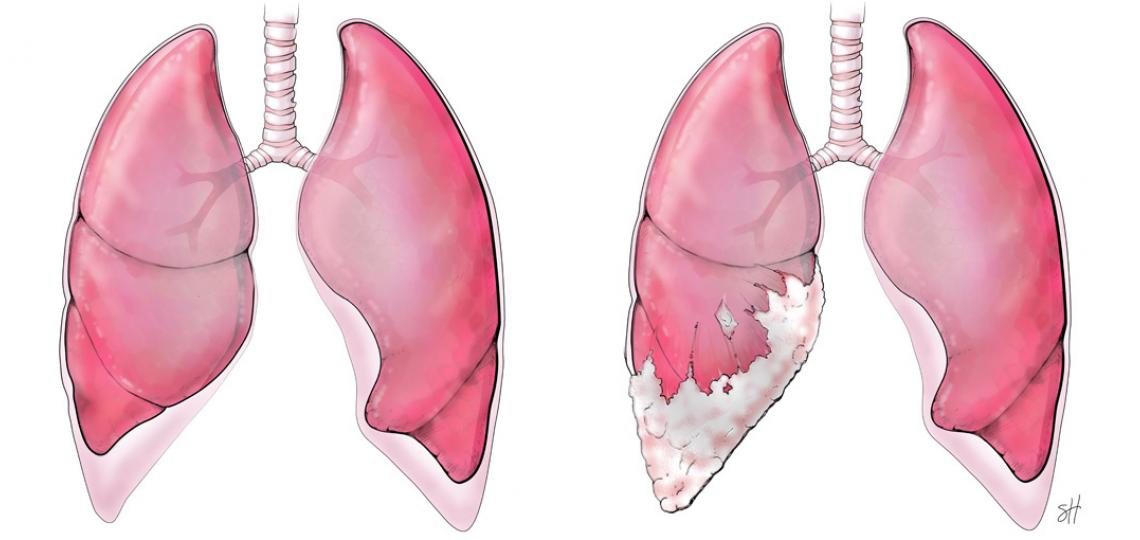Research from the National Cancer Institute shows that approximately 40.5 percent of people will be diagnosed with cancer at some point in their lifetimes. This includes millions of new diagnoses each year. And while the 5-year survival rate across all types of cancer has steadily increased to 68.7 percent, cancer continues to be one of the leading causes of death in the United states.
The most common types of cancers include breast cancer, lung cancer, colorectal cancer, prostate cancer, and stomach cancer. These five types of cancers account for roughly half of all cancer diagnoses during any given year.
While comparatively rare, tens of thousands of people are diagnosed with mesothelioma each year. And the most common type of mesothelioma is something known as pleural mesothelioma.
In this article, we’re going to explain what pleural mesothelioma is, the four stages of this cancer, and how to live well once it’s diagnosed.
What is Pleural Mesothelioma?
Pleural mesothelioma is a rare and aggressive form of cancer that primarily affects the pleura, the thin layer of tissue surrounding the lungs. This condition is most commonly associated with exposure to asbestos, a group of naturally occurring fibrous minerals that were extensively used in construction, manufacturing, and several other industries due to their durability and resistance to heat and chemicals.
Asbestos fibers, when inhaled, can become lodged in the pleura. Over time, these fibers can cause inflammation and scarring, which may eventually lead to the development of malignant tumors. The process from exposure to the development of pleural mesothelioma can be lengthy, often taking several decades.
The 4 Stages of Pleural Mesothelioma
As MesotheliomaGuide.com explains, there are four basic stages of pleural mesothelioma. Let’s explore each of them in a little more detail:
- Stage 1: This is the initial development of pleural mesothelioma. During this phase, tumors are found in the pleural cavity (the point of origin) and have not had time to spread to other tissue. While this is good news, detection during Stage 1 is very difficult. That means it’s very unlikely to get a Stage 1 diagnosis.
- Stage 2: This is still considered early stage mesothelioma. And while it’s primarily limited to the point of origin, some localized lymph node involvement can begin during stage 2. At this point, tumors may start spreading into the actual lung cavity.
- Stage 3: At this point, the cancer is no longer localized. It has begun metastasizing into the nearby lung, as well as the diaphragm and lymph nodes. Unfortunately, this is usually when mesothelioma is detected (if not later).
- Stage 4: In this stage, the cancer has likely spread into the lungs, heart, major blood vessels, and even the spine. Because it has metastasized so much, treatment is usually quite limited in stage 4.
Life With Pleural Mesothelioma
Once you wrap your mind around the four stages of pleural mesothelioma, it becomes a little more manageable to think about. However, it can still be overwhelming, frustrating, and anxiety-inducing.
With that being said, here are some practical ways to live well with a pleural mesothelioma diagnosis:
- Treat the pain. While it might not always be possible to treat the actual cancer itself and push mesothelioma into remission, there are almost always ways to deal with the pain. There’s nothing brave about letting pain ruin your quality of life. It’s okay to rely on pain management techniques to experience more “good days.”
- Treat your body well. The best thing you can do for yourself is to treat your body well. This means eating a fresh and healthy diet, staying hydrated, working out on a regular basis, getting outside for some fresh air, sleeping well, and practicing meditation, prayer, or some other form of mental rebalancing.
- Find support. It’s sometimes difficult to speak with people who don’t have firsthand experience of what you’re going through. It’s a great idea to find a support network of people who have either been through cancer or are currently going through it with you.
Obviously, you’re going to want to have your medical team help you identify a treatment plan for addressing your mesothelioma based on the current stage of the disease. However, if you also integrate some of these practical tips into your daily life, you’ll find that it has a positive impact on your overall physical and emotional health!
I am a 26 year old young and witty girl, who simply loves to write and be around her friends. I am the one who believes in filling the heart of her readers with love, passion and contentment.





